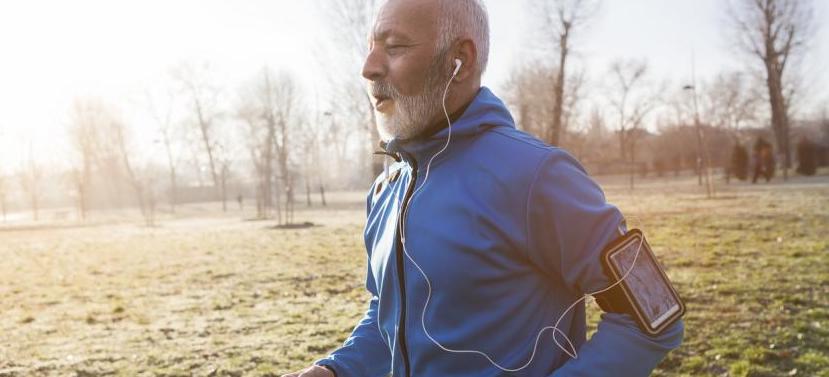Keeping active as you get older may feel like a difficult task at times, especially if you’re struggling with aches and pains.
However, regular exercise can bring many benefits – including improving balance, reducing falls and even protecting against heart disease and some cancers.
Reassuringly, Google searches show that more of us are taking accountability for our physical health as we age. Over the last three months, online searches for age-specific exercise have jumped:
- ‘Tummy exercises for over 60s’ Google searches increased by 425%
- ‘Exercise for 50 plus’ Google searches increased by 300%
- ‘Easy fitness for over 60’ Google searches have increased by 200%
Benefits of exercise as you age
“Exercise is important at all ages, but it becomes especially important when we get older” explains Emma Parker-Johns, National Activities and Wellbeing Manager at Bupa Care Services.
“Many people find themselves falling out of the habit of exercising as they age. It could be for many reasons – maybe it’s not something you feel comfortable doing, or perhaps fears of falling over hold you back.
“However, regular exercise often holds the key to staying stronger, happier, and more independent. It could also help dramatically reduce the numbers of falls and fractures associated with lost muscle bone and strength.
“Studies show that people aged 65 and over who exercise regularly are healthier than those who don’t, and they’re less likely to develop serious long-term health conditions, like heart disease and some types of cancer.
“If you’re not already in the habit of exercising, taking it up in later life might seem like an intimidating prospect, but with the right planning and support it’s more achievable than you think.
Understandably, you might feel worried about exercising if you have a health condition, or are recovering from an illness, but that shouldn’t stop you from being active altogether.
“It’s really important to move in whatever way you can to help reduce the impact of existing health problems and lessen your chances of developing any new ones. Exercise can be found in lots of different ways – it’s all about finding the ways to move that you enjoy.”
What is cardio and how often should I be doing it?
You might have heard cardio being referred to as cardiovascular activity or aerobic exercise. It’s all about making you breathe faster, making your heart and muscles work harder.
All adults should aim to do around 150 minutes of moderate-intensity cardio-based activities every week. Although this may sound like a lot, it’s a lot more achievable if you break it down into shorter ten to fifteen-minute blocks. Along with exercises that help challenge your heart and muscles, older adults should do balance-enhancing activities twice a week, too.
Brad Green, MSK Physiotherapist at Bupa Health Clinics, explains how to introduce cardio into your weekly routine: “You don’t have to sign up for a gym membership to achieve your weekly recommended exercise amount.
If you enjoy the way you exercise, you’re more likely to make it a more habitual part of your routine, so it’s important to find ways to move that you enjoy.
“Regular exercise can help make your muscles stronger, reducing your risk of falls and accidents. As your muscles and organs improve, it can help keep you more independent and increase your self-esteem.”
Here are eight examples of cardio exercise to try:
- Walking: A brisk walk is often a safe way to get your heart rate elevated. You could up your pace when walking from one errand to another or set out with a podcast or audiobook to help keep things interesting.
- On your bike! Try a bike ride to the shops, or cycle to meet up with a friend.
- Get on your dancing shoes: Whether it’s a class or round the living room, dancing can be a fun way for many people to increase their heart rate.
- Aqua aerobics: Exercise classes in swimming pools are ideal for everyone as the water supports your weight throughout.
- Swimming: Swimming alone is a great low-impact way to exercise, ideal for those with joint pain. Try adding a length each time you go!
- Anyone for doubles? Playing tennis with a friend is a great way to have fun and exercise at the same time.
- Green fingers: Gardening can be a great way to get your cardio in – and you get physical proof of your hard work! Mowing the lawn or weeding all counts.
- Get the kettle on: Marching on the spot or doing a few squats whilst waiting for the kettle to boil can be a quick and convenient way to regularly get some exercise into your day.
Top cardio tips from a physiotherapist
“If you don’t feel ready to exercise on your feet, or have mobility issues, it’s still possible to exercise whilst seated to get a heart and mood boost.
Talk to a physiotherapist about exercises that may work best for you. Using resistance bands or pushing yourself up from your chair can contribute towards strengthening activities.” Brad explains.
“Be sensible with the way you exercise – if it’s been a while, don’t jump in too hard. If you feel dizzy, or experience pain in your joints, that’s your body’s way of telling you that you’re putting it through too much, today. It’s much better to start things slowly and build it up progressively from there.
It’s important to stop and speak to a health professional immediately if you have chest pain, find it hard to breathe or feel lightheaded as you’re exercising.”
